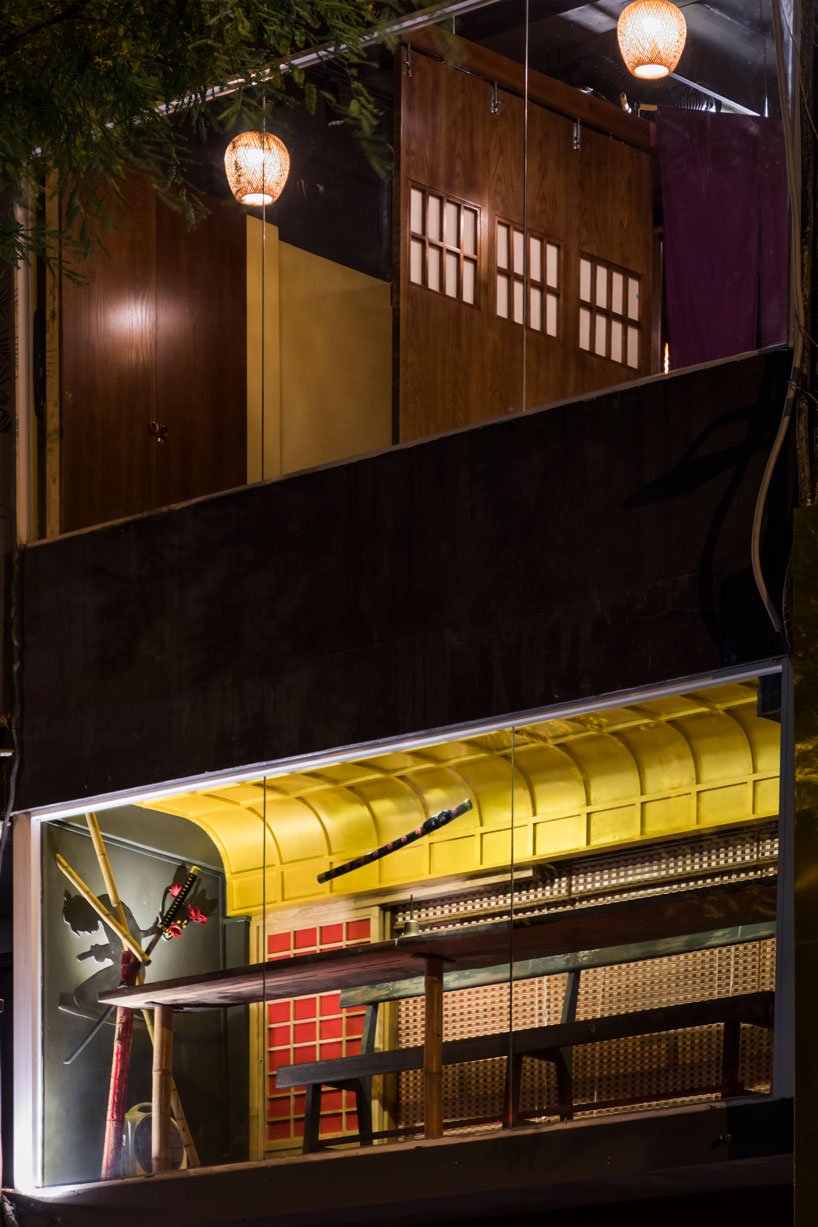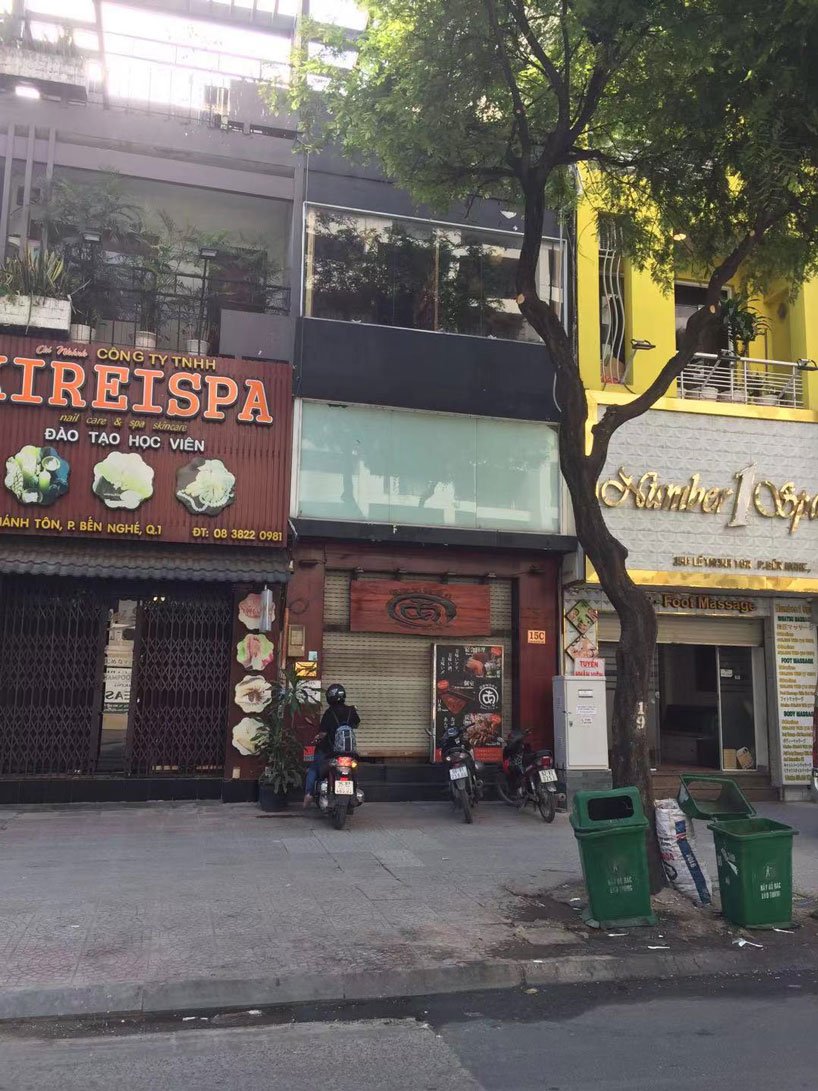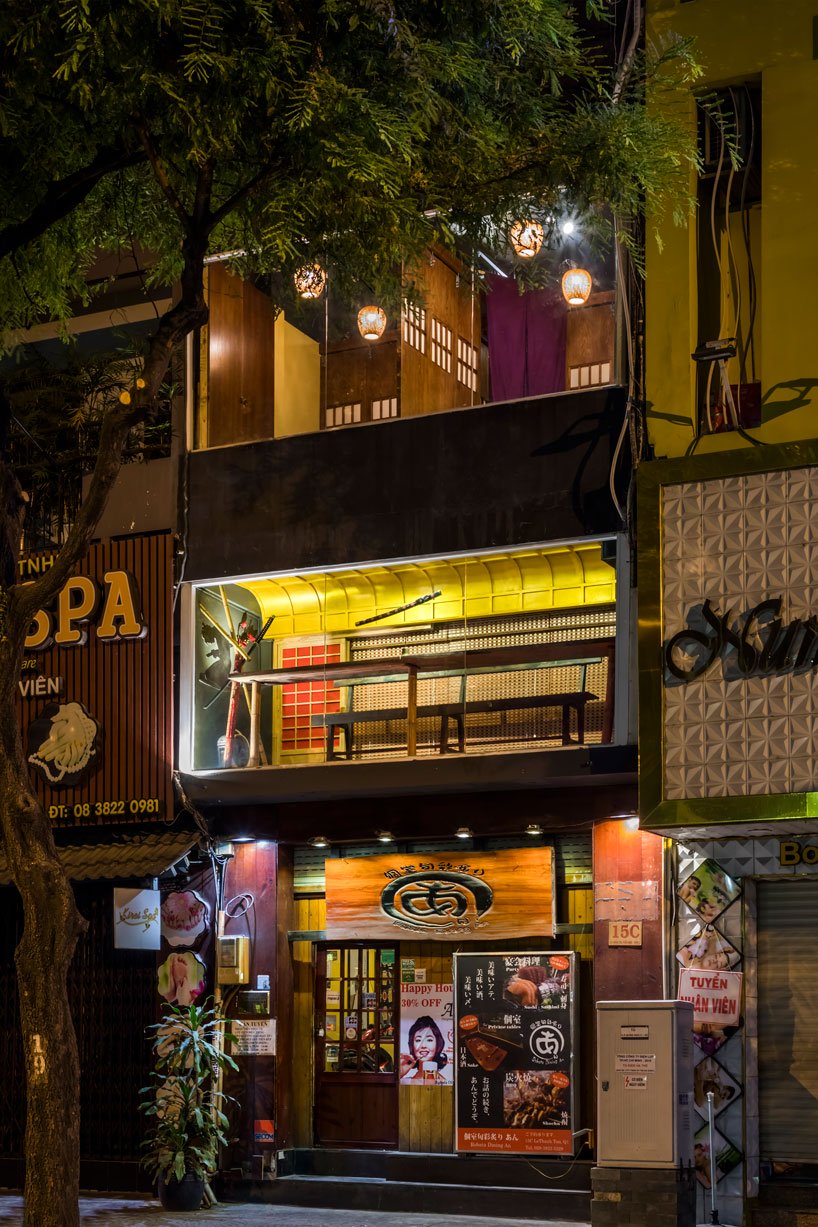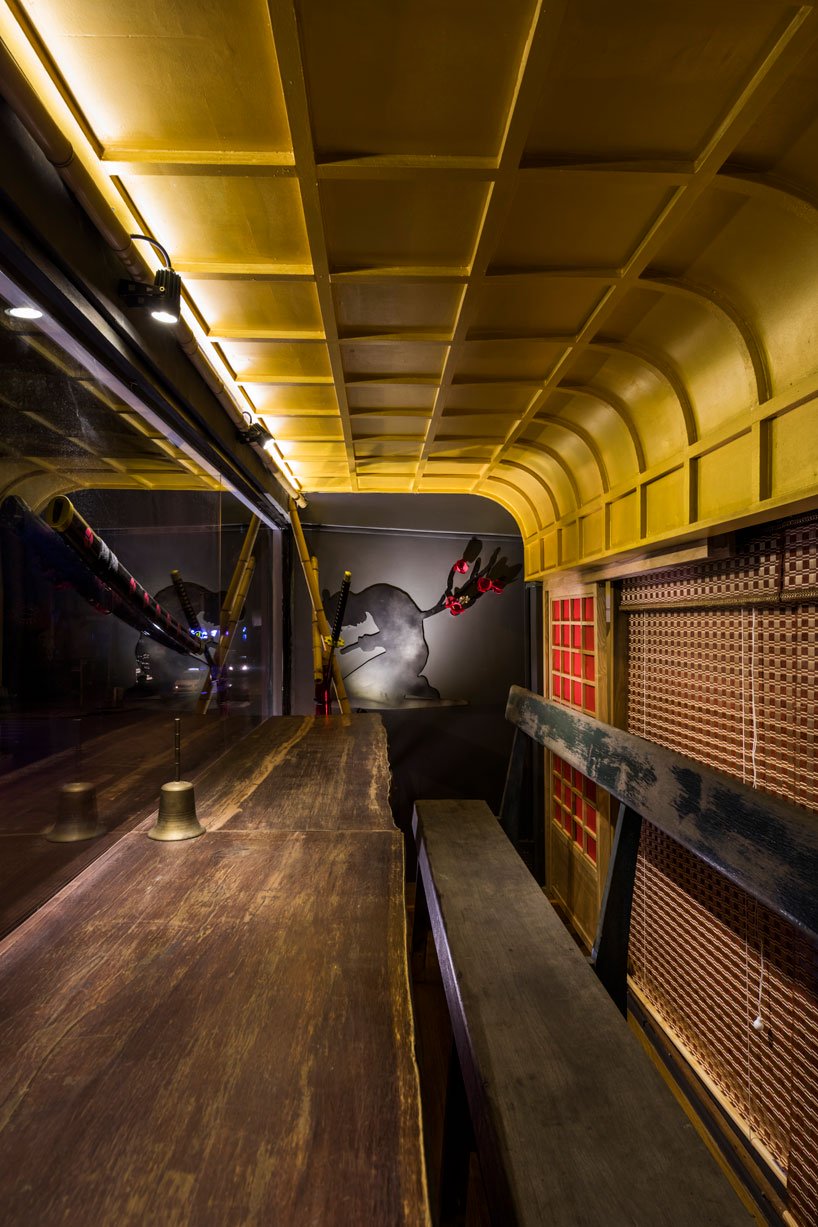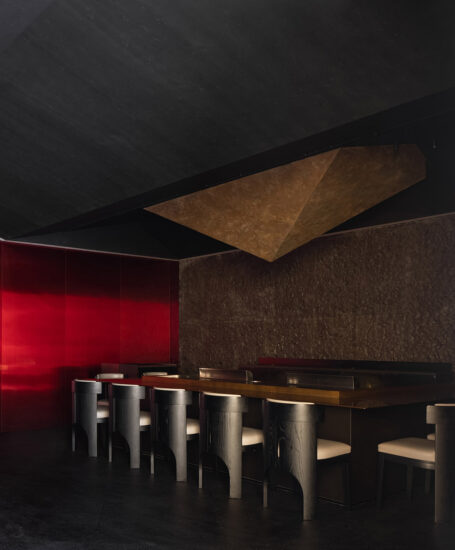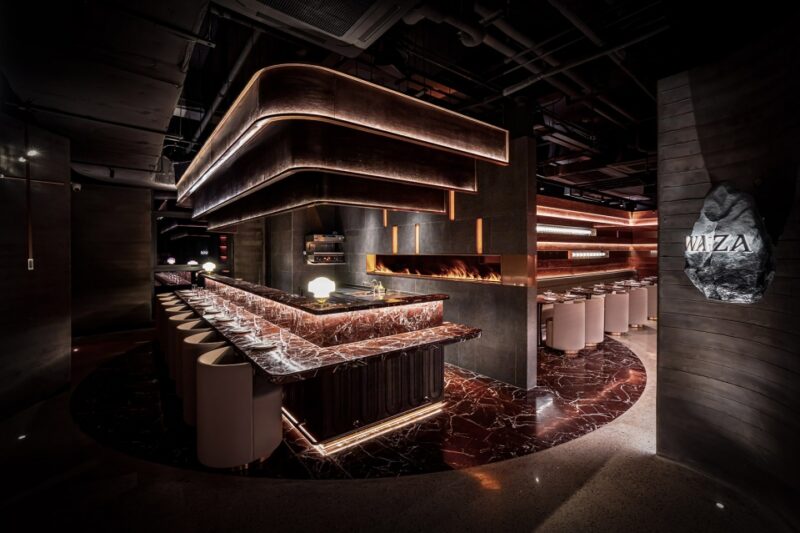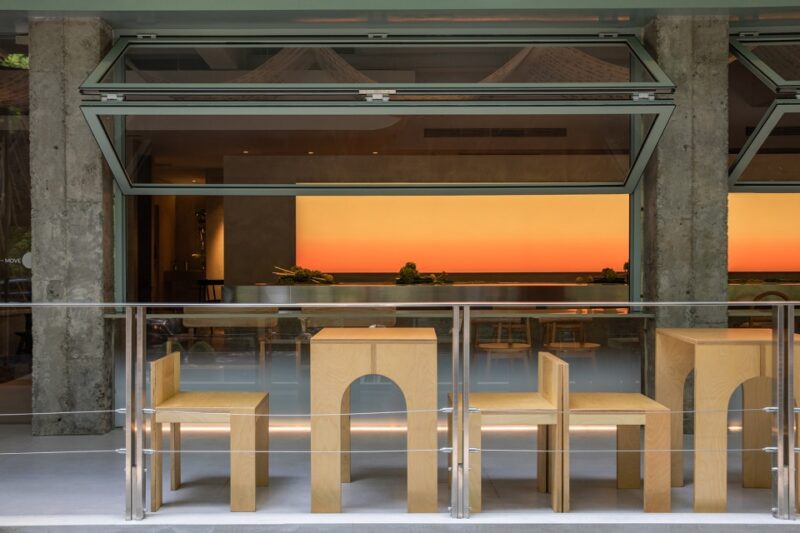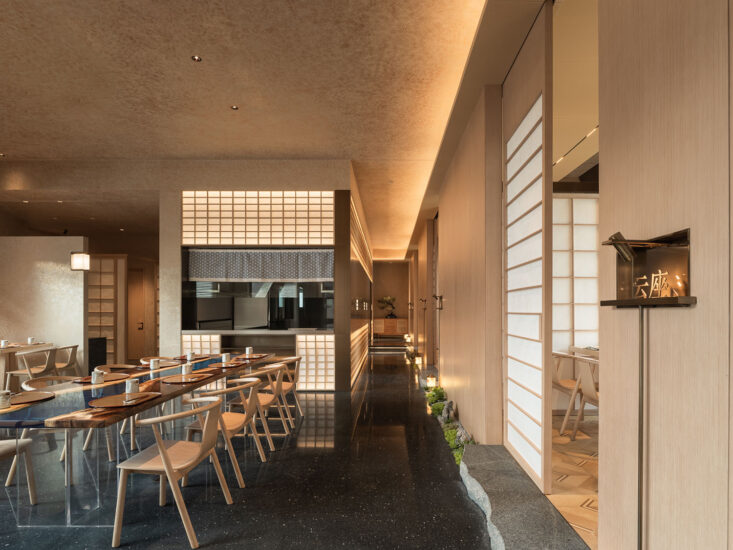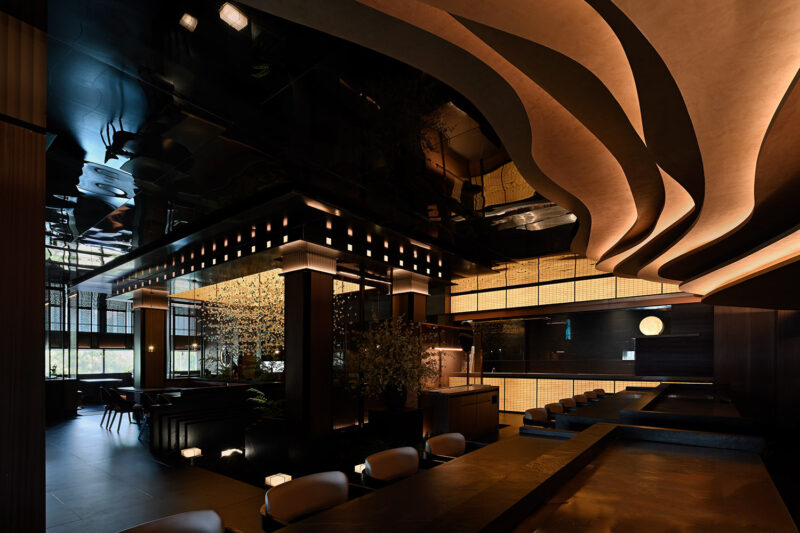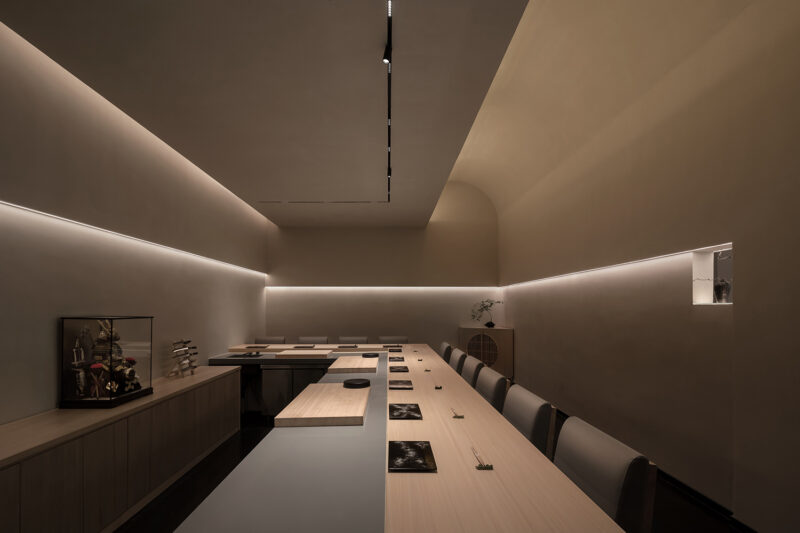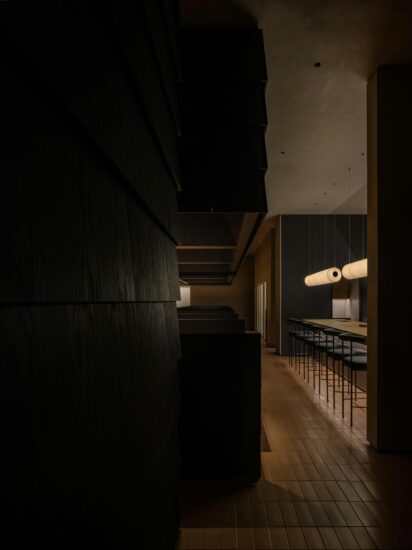在胡誌明市的市中心Lê Thánh Tôn大街,設計師maoru maeda對現有的庫房進行了“奇跡改造”,房間總共隻有3.7平方米,創造了一個小得出奇的日本餐館。目標是將其由庫房變為打卡地,同時搞活周圍鬧市。
in the downtown area of ho chi minh city, designer mamoru maeda has undertaken a ‘miracle renovation’ of an existing storeroom to create a tiny dining spot. located on le thanh ton street, the space was previously being used for storage on the second story. measuring a minuscule 3.7 sqm in total, the room has now been transformed into a curiously small japanese restaurant.
Lê Thánh Tôn大街本來隻有餐飲店、酒吧、遊樂店、酒店等等,像是日本新宿歌舞伎町似的。盡管該店鋪麵向大馬路,但因門麵二樓作為庫房,而具有無聊的外觀。因此我們規劃用其門麵設計給行人打擊,同時要充分利用其場所的優點。
Lê Thánh Tôn Street is like a combination of Shinjuku’s Kabukicho with restaurants, red-light businesses, bars, and hotels. This restaurant has a great location on the main street, yet the veranda of second floor was being used as a storage space and was very boring to the eye. We planned to leverage the second floor to create a more impactful façade.
我們認為國外日料餐廳有著兩種模型。第一,經營者是日資,顧客大部分都是日本人。另一個,經營者是外國人或當地人,顧客也是外國人或當地人。雖然這家店是日資經營,但我們希望除了日本人以外其他的都要過來。於是采用了外國人喜愛的因素,營造出“我願意坐在這家店裏這個座位!”的地方。
Usually Japanese restaurants in foreign countries fall into one of two patterns. One pattern is a Japanese-heritage owner with mainly Japanese customers. Another pattern is that a local or non-Japanese owner serves mostly local or Western customers. This restaurant’s owner is of Japanese heritage but planned to attract non-Japanese customers too. We created a place with the elements non-Japanese like, for example, by creating seats they want to sit in, etc.
我們以“武士領主的切腹自殺”為設計主題,表現武士領主在自己的房間裏自殺時的悲哀。采用了金色作為財主的象征;紅色作為表現悔恨和悲哀的血液;刀劍作為藝術作品。劈竹子,裏麵設置了紅色的LED燈,用藝術品表現切腹自殺。家具采用了古董材料,通過演出時代性,我們想抓住外國人心理。另外,為了於Lê Thánh Tôn大街鋪設打卡地,我們打造出行人不由得拍個照的地方。如果這裏成為約會點的標誌,除了該店鋪整條路都會熱鬧,也能產生相乘效果。
The design theme is “seppuku of the lord.” We expressed the emotions a lord would have when he takes his own life in his own room. Gold represents wealth, while red expresses regret and the pain of sadness, while also being the color of blood. Katanas are also used as objects. We split bamboo and inserted a red light into them to express seppuku via art also. The furniture is made of antique materials to create a feeling of the era and also appeal to non-Japanese. By creating a photo spot on the outside of the restaurant, we created an Instagrammable spot on Lê Thánh Tôn Street. If it becomes a meeting spot, not only will the restaurant reap the benefits, but so will the entire street, creating a synergetic effect. The renovation of this 3.3 m2 space evolved what used to be just storage into the most interesting spot on Lê Thánh Tôn Street.
主要項目信息
項目名稱:JAPANESE RESTAURANT Robata Dining AN
項目位置:越南胡誌明
項目類型:餐飲空間/日料餐廳
項目麵積:3.7㎡
完成時間:2020.01
設計公司:SEMBA VIETNAM(Mamoru Maeda)
攝影:DeconPhotoStudio Hiroyuki Oki



